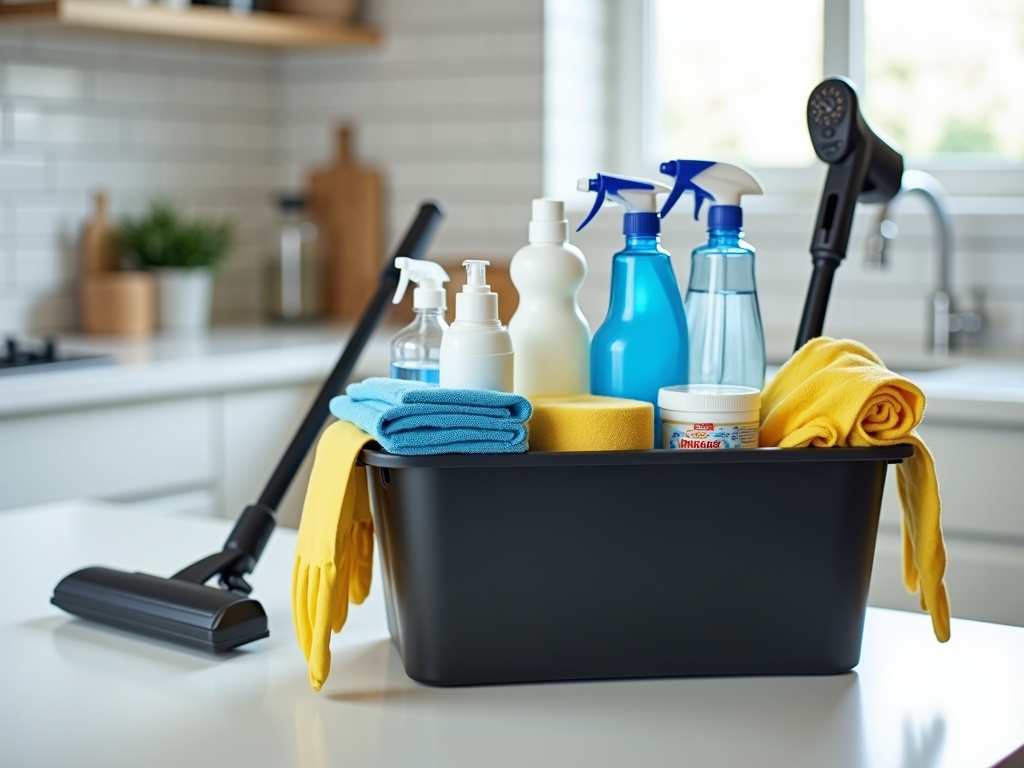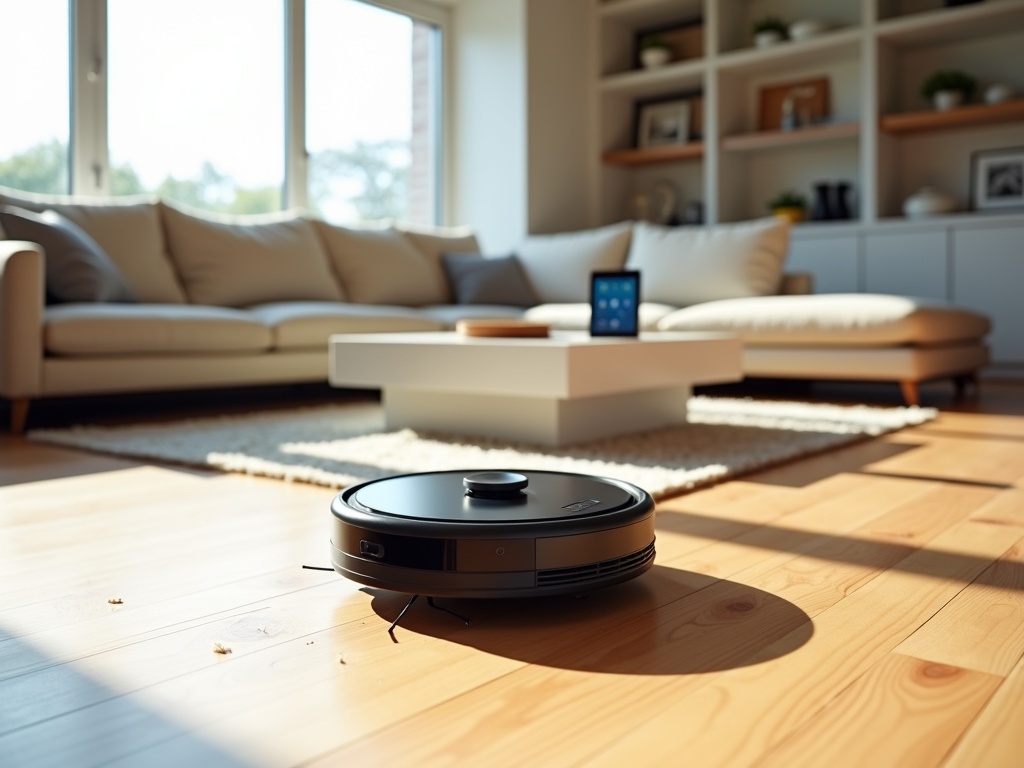If you're a parent staring at overflowing laundry baskets, sticky countertops, and a living room that somehow always looks like a tornado danced through it by Tuesday—you’re not alone.
Home cleaning for busy families can feel impossible. Between work, school runs, soccer practices, and dinner duty, when are you supposed to vacuum? Or deep-clean the bathroom? No one wants to spend their entire weekend scrubbing floors when they could be enjoying family time or just finally sitting down.
That’s exactly why structured cleaning strategies don’t just help—they save lives. (Okay, homes. But it feels that intense sometimes.)
When you get home after a long workday, the last thing you want is to scrub baseboards or organize under the sink.
Time is the biggest enemy here. Tasks stack up fast, and soon Saturday becomes the cleaning Olympics.
Meanwhile, clutter doesn't just make the place look messy—it adds stress. A study from UCLA’s Center on Everyday Lives of Families found that high levels of household clutter directly increase cortisol (your stress hormone). That’s not just “mental clutter”… it’s biological.
You don’t need perfection. You need a plan that lightens the load without burning you out.
Here’s the truth: consistency wins. It’s not about doing everything every day—it’s about doing the right things steadily.
Key takeaway: Families don’t need spotless homes—just manageable systems that prevent constant chaos.

Want to know a secret? Most “clean-looking” homes aren’t spotless—they’re structured.
A weekly cleaning schedule (https://www.sierrastoptobottomcleaning.com/blog-posts/home-cleaning-services) spreads your tasks across entire days, which means:
For example:
You can mix this by family size, energy levels, or upcoming events (like houseguests or Halloween candy explosions).
Here’s the kicker: Families who follow weekly cleaning schedules often report spending 30–50% less time cleaning overall.
It’s about being proactive versus reactive. And that puts you back in control.
Key takeaway: A weekly cleaning schedule keeps maintenance light and consistent—freeing weekends for living, not scrubbing.
I used to leave most of the cleaning for Saturday morning. Every. Single. Week. Then my kids would complain, I’d get cranky, and nobody was catching a break. It wasn’t working.
A few months ago, I switched to a task-per-day system. It felt weirdly small at first, like, “What’s the big deal about just wiping down counters today?” But by Thursday? The house looked...good. Tidy. Manageable.
Now Friday comes around, and instead of five hours of deep-cleaning dread, we have a quick 30-minute sweep-up, and the rest of the weekend is clear. Zero regrets.
The takeaway? One hour a day beats six on a Saturday.

So, how do real families stay on top of it all without spending Saturday battling back the grime?
They break it down:
You don’t have to do it all yourself. Delegate.
Have kids? Use a simple chore chart. Make it visual, like a whiteboard checkmark system on the fridge. Kids ages 5–10 can:
Older kids can help with:
Mix it up to avoid burnout. Rotate laundry duty or have your teen do the bathroom once a month.
Key takeaway: Clean homes aren’t about doing more—they’re about doing smarter, smaller things consistently.
I’ve walked into hundreds of homes professionally, and I can tell you the difference between a chaotic house and a controlled one boils down to systems.
Here’s what works for real families:
Also—keep a “donation bin” in a closet. Every time you find something you don’t need, toss it in. When it's full, drop it off.
This one simple habit keeps clutter at bay without needing a dramatic monthly purge.
Key takeaway: A few surface-level changes can prevent deep-cleaning disasters later.
If you’re spinning your wheels trying to do it all—it’s okay to hand off the heavy lifting sometimes.
Families are increasingly outsourcing tasks like deep-cleaning showers, scrubbing baseboards, or even post-party cleanups. You don’t need to do it all alone to feel on top of things.
Think of professional cleaners as your reset button.
Even just hiring a pro once every month or quarter gives your family a breather. You stay in maintenance mode instead of drowning in the mess.
We charge $80 per hour for full-service top-to-bottom cleaning (https://www.sierrastoptobottomcleaning.com/services/residential-cleaning). For most standard homes, that means two to three hours gets you back on track—without lifting a finger.
Contact us anytime: 253-449-6100 or sierrastoptobottomcleaning@gmail.com.
Key takeaway: If you’re burnt out, outsourcing isn’t lazy—it’s part of a smart, hybrid routine.
Now that you’ve seen how home cleaning for busy families works, it’s time to take action.
Next, we’ll break down how to actually plan out your custom schedule, delegate tasks, and choose the right tools to keep everything running without derailing your week.
You’ve got routines that work for breakfast, school drop-offs, and bedtime—why not one for cleaning too?
Once you understand the power of a cleaning rhythm, the next step is building your own custom weekly plan.
And it should be built around one thing: your real life.
Start here:
For example, I know Tuesdays are meeting-heavy for me, so that day only has a 10-minute tidy-up.
Fridays? I have more room to breathe, so I handle floors and any weekly catch-ups.
Biggest trick? Leave some buffer days. Life happens.
If a family dinner or meltdown throws off your Wednesday bathroom plan, you can shift it to Friday without blowing up your whole system.
Key takeaway: Your schedule should serve you, not control you.
The better it matches your life, the more you’ll stick with it—and the less you’ll dread keeping your house clean.

If you’ve ever wasted 15 minutes just looking for the glass cleaner, you already know how frustrating bad systems are.
Good tools and simple systems turn the “ugh” tasks into quick wins.
You want tools in arms’ reach—because no one’s trekking to the garage when there are crushed Cheerios under the table.
We keep a small tote in each bathroom and one under the kitchen sink—no excuse for not wiping the counter.
Key takeaway: Organized tools = faster cleaning + fewer excuses.
Here’s the truth: kids can do more than we think.
Not only does it lighten your load, but it teaches responsibility and pride—plus, they’re part of the mess, so they should be part of the fix.
Make it visual. A magnetic board, whiteboard chart, or printable checklist gives everyone clarity and lets them check it off.
Rotate tasks weekly to keep it fresh.
A little reward system never hurts either—movie night, game time, or just recognition fuels consistency.
Key takeaway: Kids love structure. When chores are clear, consistent, and rewarded, they almost become proud of the part they play.
Even the best systems meet chaos sometimes.
Sick days. Work deadlines. School project explosions. It's normal.
Here’s your no-stress reset process:
If needed, outsource one big job (https://www.sierrastoptobottomcleaning.com/services/deep-house-cleaning-84e96) to jumpstart momentum again.
Key takeaway: Missing a day or two doesn’t wreck your routine—plan for course corrections like they’re part of the schedule.
Want to know what smart families are adopting this year?
These trends aren't just buzz—they actually save time and sanity.
More parents are switching to non-toxic sprays, reusable cloths, and chemical-free bathroom solutions. Not just better for the planet—it gives peace of mind around kids (and pets).

Less stuff = less mess = easier chores.
Families are embracing capsule wardrobes, donation routines, and toy rotations to simplify what hits the floor in the first place.
And hiring part-time cleaners is up by more than 25%, especially among dual-working households, according to data from the American Cleaning Institute.
Why? Because it doesn’t mean you can’t clean—it means you’ve chosen to manage your energy wisely.
We’re in several homes every week where parents do daily resets, and we just handle the deep stuff: oven interiors, behind-the-couch dust bunnies, moldings.
Key takeaway: Pick and choose from trends (https://thecrownedgoat.com/modern-day-cleaning-schedule-made-easy/) that match your lifestyle—there’s no badge for doing it all alone.
Not every home runs the same way—so your system shouldn’t either.
Key takeaway: The best cleaning schedule is the one you’ll actually follow—don't copy someone else’s rhythm blindly (https://home.howstuffworks.com/home-improvement/household-hints-tips/cleaning-organizing/weekly-cleaning-schedule.htm).
Whether your only cleaning tool is a paper towel or you're already on your third robot vacuum, there’s a system for you.
Key takeaway: Efficiency beats effort. The simpler the plan, the easier the upkeep, the cleaner your home.
You don’t need to sanitize every sewer line or color-code your linen closet.
You just need a system that works — and sticks — even when life is bananas.
Home cleaning for busy families isn’t about being Pinterest-perfect.
It’s about living in a space that gives you room to breathe, not more stress.
Break it down.
Build your rhythm.
Get help when you need it.
And remember... A lived-in home can still be a clean one.
If you’re ready to skip burnout with a fresh start, schedule a full reset and let us help:
We charge $80/hour for deep cleaning—just 2–3 hours can restore peace (and give your schedule some breathing room).
Call us at 253-449-6100 or email sierrastoptobottomcleaning@gmail.com.
Because at the end of the day, nothing beats walking into a home that feels managed, not messy.
And it all starts with a smart, flexible home cleaning system for busy families (https://www.sierrastoptobottomcleaning.com/blog-posts/finding-reliable-house).
